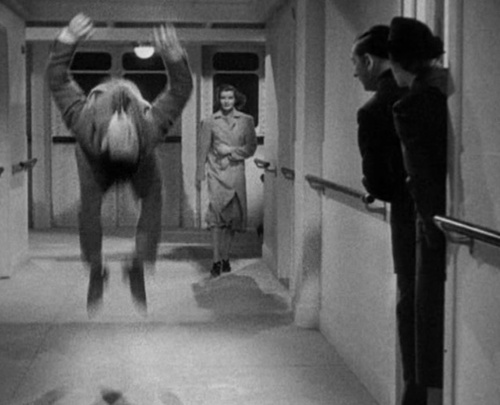Cary Grant was prized in motion pictures for his suave, sophisticated style, a manner of talking, moving and dressing that bespoke, above all, class. However, if you watch his performances closely–very closely–you will note two things. One is a slight working class accent. The other is a surprising facility for physical comedy, whether its face-pulling, tumbles, or double takes. The former has to do with his modest English origins. The latter was the result of his many formative years spent as a member of comic acrobatic troupe in music hall and vaudeville.
Archibald Leach was born in Bristol, England in 1904 to a drunken father and a controlling, mentally ill mother. At age nine young Archie was informed that his mother was “away for a rest”. She was only in a sanitarium, a fact which Leach did not learn until 1935 when he was the famous movie star Cary Grant.
As a youngster he became a production assistant at various Bristol Theatres. In 1917, barely in his teens, he joined Bob Pender’s Knockabout Comedians. The company toured the provinces for the next couple of years. In 1920, they boarded the Olympic for a booking in America. The troupe opened at the Hippodrome in a revue called “Good News”, which ran for 9 months. In 1921 they toured the Keith Circuit, with a final gig at the Palace in 1922.
There is very little photographic record of his acrobatic days, but here he is with the Pender troupe:

He seldom got to display the full range of his skills on celluloid, but someone was nice enough to take this screengrab from the movie Holiday, in which he surprises us with a sudden backflip:
Pender returned to the U.K., but Leach chose to stay in the U.S. He got some work doing stilt walking in Coney Island. Then he went on in “Better Times” the sequel to “Good News” at the Hippodrome, with some fellow Pender’s veterans. Booked as “The Walking Strangers” the group did a vaudeville act, working the Pantages wheel in 1924. Archie moved into the National Vaudeville Artist’s Club, making himself generally available as a substitute. He was a valuable man to have around. His skills included juggling, acrobatics, unicycle, comic sketches, and (not to be sneered at) he was an excellent straight man. He worked in the latter capacity, for example for Milton Berle at Proctor’s Newark. During these years of struggle, he became good friends with Burns and Allen. He studied Burns and Zeppo Marx as examples of some of the top straight men in the business.
Check it out! The Lambs Club has one of his dental records from these early days:

In the late ’20s, Leach/Grant began to move into musical comedy. He was cast in the 1927 Hammerstein musical Golden Dawn. In 1929, he did Boom Boom for the Shuberts with Jeanette McDonald. He worked in various Shubert shows for three years. Then his friend and colleague Fay Wray went to Hollywood to star in King Kong. Wray persuaded Leach to make the move himself in late 1931, where he signed at Paramount as Cary Grant. That carefully wrought name and persona was invented—fashioned with all the care and diligence of the old vaudevillian the man always was.
To find out more about the history of vaudeville and performers who got their start there like the great Cary Grant, consult No Applause, Just Throw Money: The Book That Made Vaudeville Famous



[…] actor in films of the 30s and 40s, including Carefree with Astaire and Rogers, His Girl Friday with Cary Grant and Hellzapoppin with Olsen and Johnson, as well as a regular on the television show My Little […]
LikeLike
[…] a spot that had just been vacated by a young Brit named Archie Leach (soon to be better known as Cary Grant). The trio toured for six months before breaking up. He was in two Lew Fields musicals Ritz Girls […]
LikeLike
[…] in the mouth of a dummy, he got away with it. Alfred Lunt and Joan Fontaine were big fans, as was Cary Grant, who offered to manage […]
LikeLike